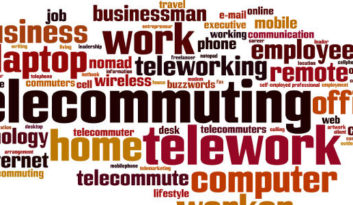Voice over IP (VoIP) telephony routes your voice over the internet, rather than using a traditional telephone line. This brief guide will show you how it works, how it’s evolving, and why it’s an efficient alternative to the traditional PBX.
Nuts and Bolts
Traditional phone lines are essentially copper wires that connect to a cabinet in the street. Cabinets connect to a local exchange, and calls are connected using a switching mechanism. This method is called circuit switching.
Most of us have a landline at home that’s provisioned in this way. Traditionally, circuit switching was efficient and affordable, although providers tend to charge more for long distance calls. In business, it starts to become expensive once you add more features and lines to your setup.
VoIP uses packet switching, a technique that’s used for transmitting data online. Packet switching allows large amounts of data to be split into small packets, transmitted, then pieced back together thousands of miles from the source. With VoIP telephony, this means the sound of your voice will be converted into digital data, split, transmitted and reassembled into an audible sound – all within milliseconds. Packet switching was the revolutionary trigger that transformed the primitive ARPANET into the modern internet.
Note that the two systems are compatible. You can call a circuit switched phone from a packet switched (VoIP) phone, and vice versa. In most cases, you’ll never know which one the recipient is using.
Finally, SIP stands for Session Initiation Protocol. That’s the protocol that connects the calls. In simple terms, SIP is a virtual version of the old-fashioned telephone exchange.
Pros and Cons
Landline telephones are already installed in many premises, and often, you have to take a landline service when you buy broadband since you pay line rental either way. This is slowly changing, though, so don’t feel you must take a landline if you intend to use VoIP: shop around.
VoIP calls are also transmitted at a comparable quality to circuit switched calls. Having said that, if you call from VoIP to VoIP, you should find that the call quality is actually much better because the data is being transmitted digitally end to end (albeit with some compression).
There is one caveat with VoIP: while landline phones only need a connection to the exchange to work, VoIP phones generally need a network connection and a power supply (mains, or power over USB). You should make arrangements to have a backup phone for 999 calls, just in case your power or internet service is cut off.
Evolution
VoIP is an established method of communication, but it continues to evolve. Modern VoIP services offer vastly improved call quality, video and other features like virtual switchboards. Once you begin to investigate the possibilities, you’ll understand how this exciting technology is changing the way we all communicate.

